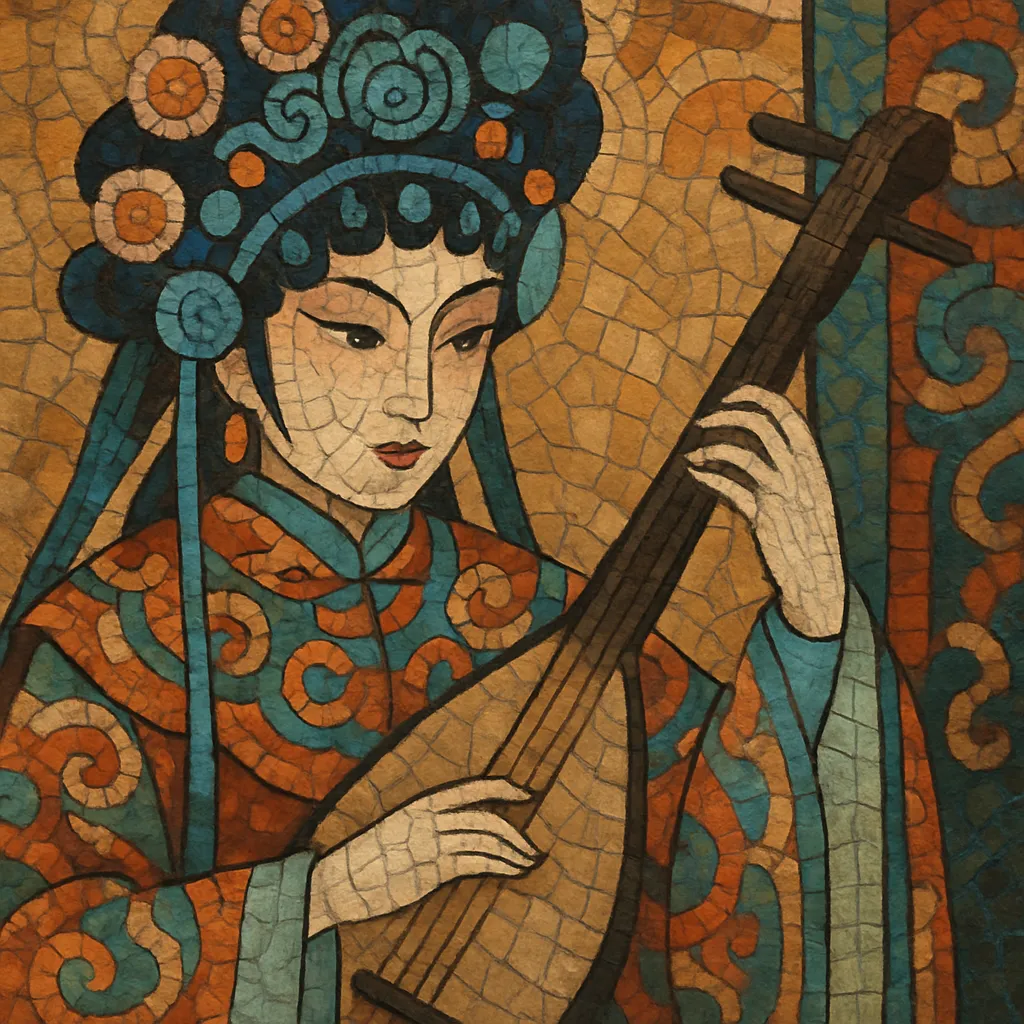Cantonese opera (Yueju in Cantonese usage) is a major southern Chinese xiqu tradition performed in the Cantonese language. It integrates sung arias, heightened speech, stylized acting, dance, mime, martial arts, and acrobatics into a single theatrical form with codified role types (sheng, dan, jing, chou) and gesture vocabularies.
Musically, it features pentatonic and related modal materials, flexible banqiang (aria-tune and metric) systems guided by percussion cues, and a distinctive ensemble led by the gaohu alongside gongs and drums (luogu). Repertoires draw on history, classical literature, and folklore, while the singing style emphasizes nuanced ornamentation, glides, and timbral control aligned with Cantonese tones.
Cantonese opera formed in Guangdong during the late Qing period as touring troupes and local artists fused northern operatic tune families (such as bangzi/erhuang associated with Beijing opera) with southern song practices and regional folk idioms. Performances in the Cantonese language, coupled with percussion-driven banqiang structures and local melodic habits, generated a recognizably Cantonese stage sound.
Urbanization in Guangzhou, Foshan, and the Pearl River Delta supported professional troupes, teahouse theatres, and training lineages. Artists such as Sit Kok Sin spearheaded reforms in staging, dramaturgy, and vocal presentation. Recording and radio in the Republican era amplified the genre’s reach, and touring networks linked Guangdong with Hong Kong, Macau, Southeast Asia, and overseas Chinese communities.
After the Second World War, Hong Kong became a creative center. Iconic partnerships—most famously Yam Kim-fai and Pak Suet Sin—defined a golden era on stage and screen. Librettist Tong Tik-sang authored beloved romantic-historical works like The Flower Princess and The Purple Hairpin, while hundreds of Cantonese opera films brought the art to mass audiences.
Competition from television, cinema, and pop music reduced mainstream audiences, yet leading artists such as Lam Kar-sing and later Loong Kim-sang sustained high performance standards and pedagogy. Training schools, heritage programs, and cross-border collaborations revitalized interest. In 2009, Cantonese opera was inscribed on UNESCO’s Representative List of the Intangible Cultural Heritage of Humanity, affirming ongoing efforts in Hong Kong, Guangdong, Macau, Southeast Asia, and the global diaspora.
Write texts in Cantonese, balancing literary elegance and colloquial clarity. Align lyrics with Cantonese tonal contours to preserve meaning and support melodic phrasing. Favor couplets, parallelism, and classical allusions when appropriate.
Structure arias within banqiang frameworks—melodic-rhythmic molds coordinated by percussion cues. Alternate between free-metered recitative and metered aria segments, allowing tempo flexibility (rubato) for expressive singing while keeping clear drumming patterns to anchor the pace.
Compose primarily with pentatonic and related modes, using ornamentation (slides, turns, appoggiaturas) and measured vibrato. Shape phrases to honor Cantonese tones, and differentiate timbres for role types: refined, sustained lines for romantic leads; brighter projection and rhythmic bite for comic roles; and bold, declamatory style for painted-face roles.
Score for a Cantonese opera ensemble led by gaohu (principal bowed lead), supported by erhu/yehu, yueqin and qinqin (plucked lutes), ruan, yangqin (hammered dulcimer), and bamboo flutes (dizi/xiao), with occasional suona for brilliant timbres. Use the luogu percussion battery—bangu (clapper drum), woodblock, small and large gongs, and cymbals—to cue entrances, signal actions, and articulate scene changes.
Compose with choreographic beats in mind: entrances, exits, stylized walks, sleeve work, and martial sequences. Integrate percussion “calls” to dovetail with gestures and acrobatics, ensuring musical phrases give performers space to complete moves and convey character.
Prepare parts in gongche notation or staff notation, but teach and refine by ear to internalize ornamentation and timing. Workshop with singers to align melodic contours to text and with percussionists to refine cueing patterns.


